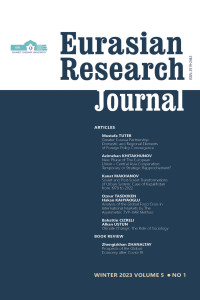Abstract
This study analyzes the transformation of the urban system in Kazakhstan from 1979 to 2022 by studying the interrelationship between population change in large cities and demographic trends in nearby towns and rural areas. The findings suggest that the collapse of the USSR triggered a large-scale spatial realignment of the population leading to dramatic changes in the population size of urban settlements. The estimations largely failed to confirm relationships between the growth of large cities vs population change in mid-size and small urban settlements that would hold throughout the entire sample period. However, the analysis of district-level data showed that remote and rural areas were more prone to depopulation while districts around rapidly growing large cities had significantly higher rates of population growth. The population in large cities and regional centers was found to be growing much faster than in periphery areas, which is very much in line with findings from studies done on other former Soviet states.
Details
| Primary Language | English |
|---|---|
| Subjects | Demography |
| Journal Section | Research Articles |
| Authors | |
| Publication Date | February 28, 2023 |
| Published in Issue | Year 2023 Volume: 5 Issue: 1 |


